The 2025 Lexus UX 300h represents continual evolution in the subcompact luxury crossover segment. This model year brings an entirely new hybrid powertrain that delivers more power while maintaining the fuel efficiency Lexus hybrids are known for.
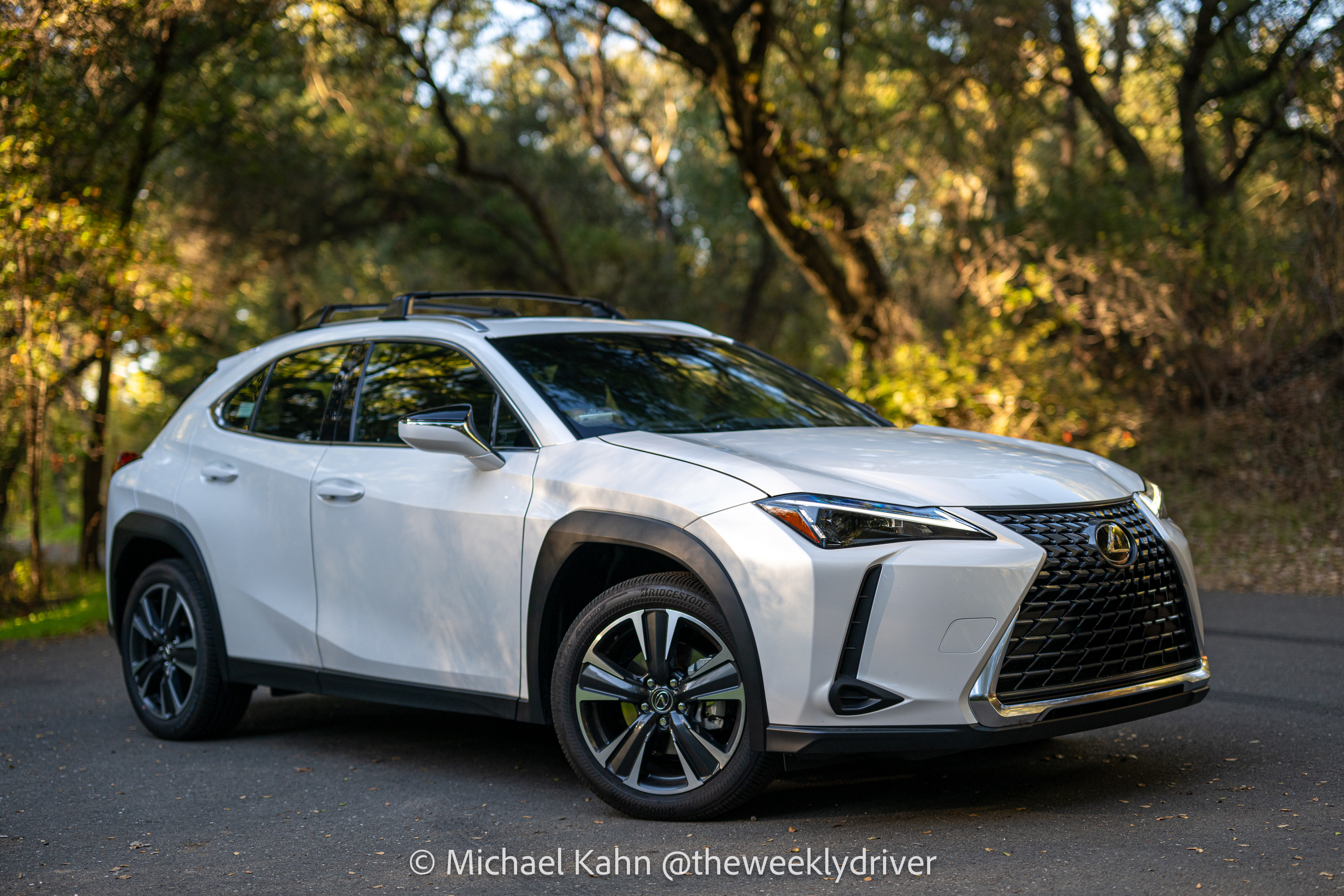
Finished in Eminent White Pearl with a Palomino NuLuxe interior, the UX 300h demonstrates how Lexus positions its entry-level crossover against established German competitors.
Lexus equipped the 2025 UX 300h with its fifth-generation hybrid system, shared with the redesigned 2024 Toyota Prius. The 2.0-liter Atkinson-cycle four-cylinder engine produces 150 horsepower and 139 lb-ft of torque on its own.
Combined with two electric motors in front-wheel-drive configuration, the system generates 196 horsepower. This is a 15-horsepower increase over the previous UX 250h.
The new hybrid architecture uses a lithium-ion battery pack located under the rear seat, replacing the previous nickel-metal hydride design. The front motor outputs 83 kW while maintaining smooth power delivery through the continuously variable transmission.
Acceleration improves measurably. The front-wheel-drive configuration reaches 60 mph in 7.7 seconds, a half-second quicker than its predecessor.
Real-world driving reveals adequate power for highway merging and passing maneuvers, though the engine becomes audible under hard acceleration. The CVT operates with less of the characteristic drone found in other Toyota hybrids, delivering power in a reasonably refined manner.
Daily driving between Sacramento’s midtown core and suburban Folsom exposes both the strengths and limitations of the UX 300h. The compact dimensions make navigating congested city streets straightforward.
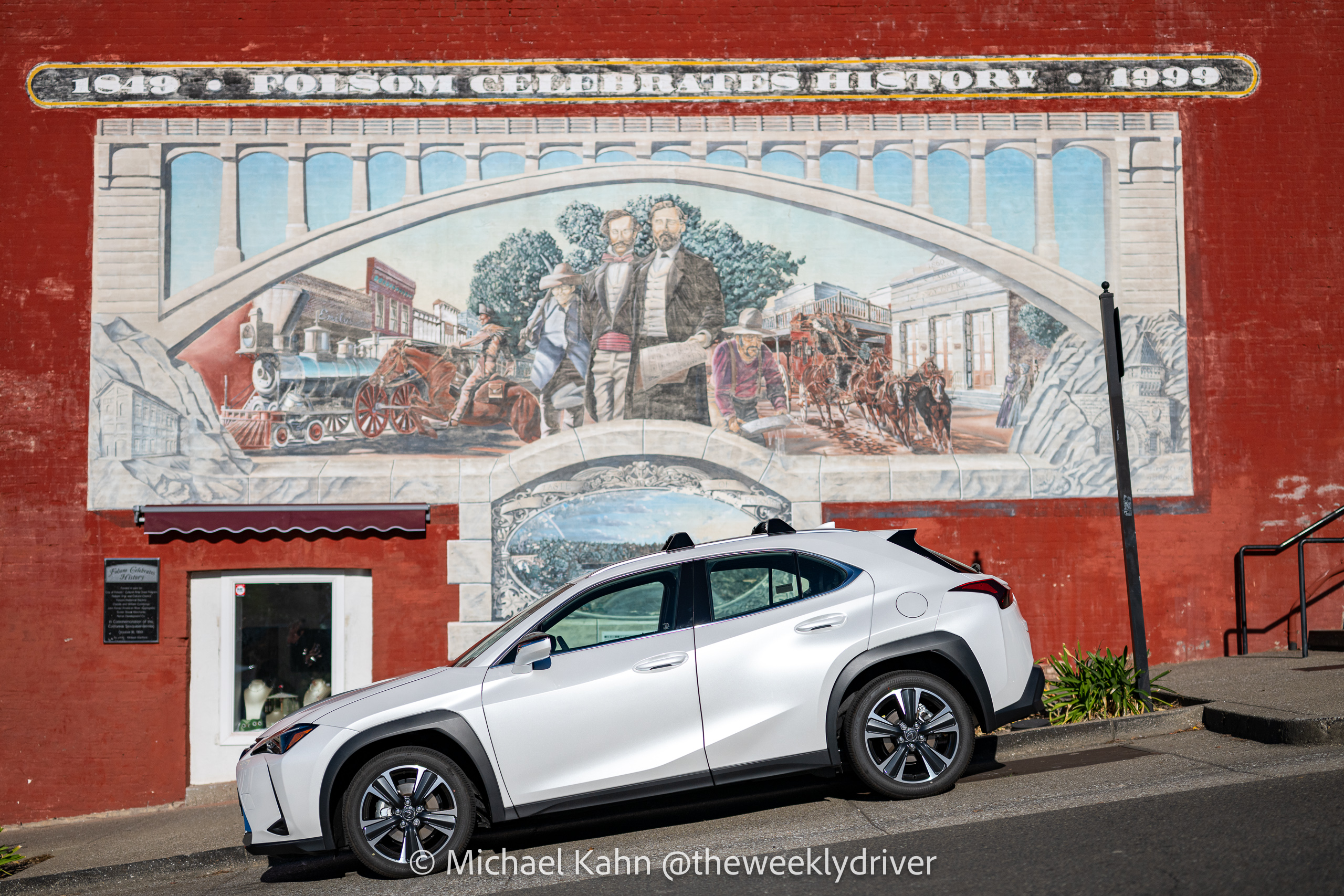
Parking in tight midtown spots proves effortless thanks to the 34.2-foot turning circle.
Interstate 50 and Interstate 80 construction projects currently dominate Sacramento’s highway infrastructure. Weekend closures and nightly lane restrictions create frustrating traffic conditions. The UX 300h’s Lexus Safety System+ 3.0 becomes essential equipment in this environment.
All-Speed Dynamic Radar Cruise Control maintains preset following distances even in stop-and-go traffic.
The system includes Curve Speed Management, which moderates vehicle speed when navigating highway curves while cruise control is engaged.
Lane Tracing Assist keeps the vehicle centered in its lane when lane markings are visible. This feature reduces fatigue during the tedious crawl through construction zones on both Interstate 50 and Interstate 80.
The system works in conjunction with Dynamic Radar Cruise Control, providing gentle steering inputs to maintain lane position.
Construction zones with narrow lanes and temporary barriers test these systems. The UX 300h responds predictably, though the driver must remain engaged as the system cannot handle all situations autonomously.
Road Sign Assist displays speed limit changes on the multi-information display, useful when construction zones implement reduced speed limits.
The Pre-Collision System with Pedestrian Detection monitors for vehicles, pedestrians, bicyclists, and motorcyclists. A trash bag had fallen from a vehicle ahead, leaving cans of soup and clothes strewn on the road, which the vehicle did not detect, a reminder the constant vigilance is required while driving.
New for Lexus Safety System+ 3.0 is Risk Avoidance Emergency Steer Assist, which provides additional steering torque during driver-initiated emergency maneuvers between 25-50 mph.
Left Turn Oncoming Vehicle Detection with automatic braking activates in certain daytime conditions.
Proactive Driving Assist provides gentle braking into curves or gentle braking and steering to help maintain distance from preceding vehicles, pedestrians, and bicyclists when system conditions are met.
This feature activates frequently in urban Sacramento traffic, particularly around midtown where pedestrian and bicycle traffic is heavy.
Highway speeds on Interstate 50 toward Folsom feel stable. The UX 300h maintains composure at 70-75 mph, though wind noise becomes noticeable.
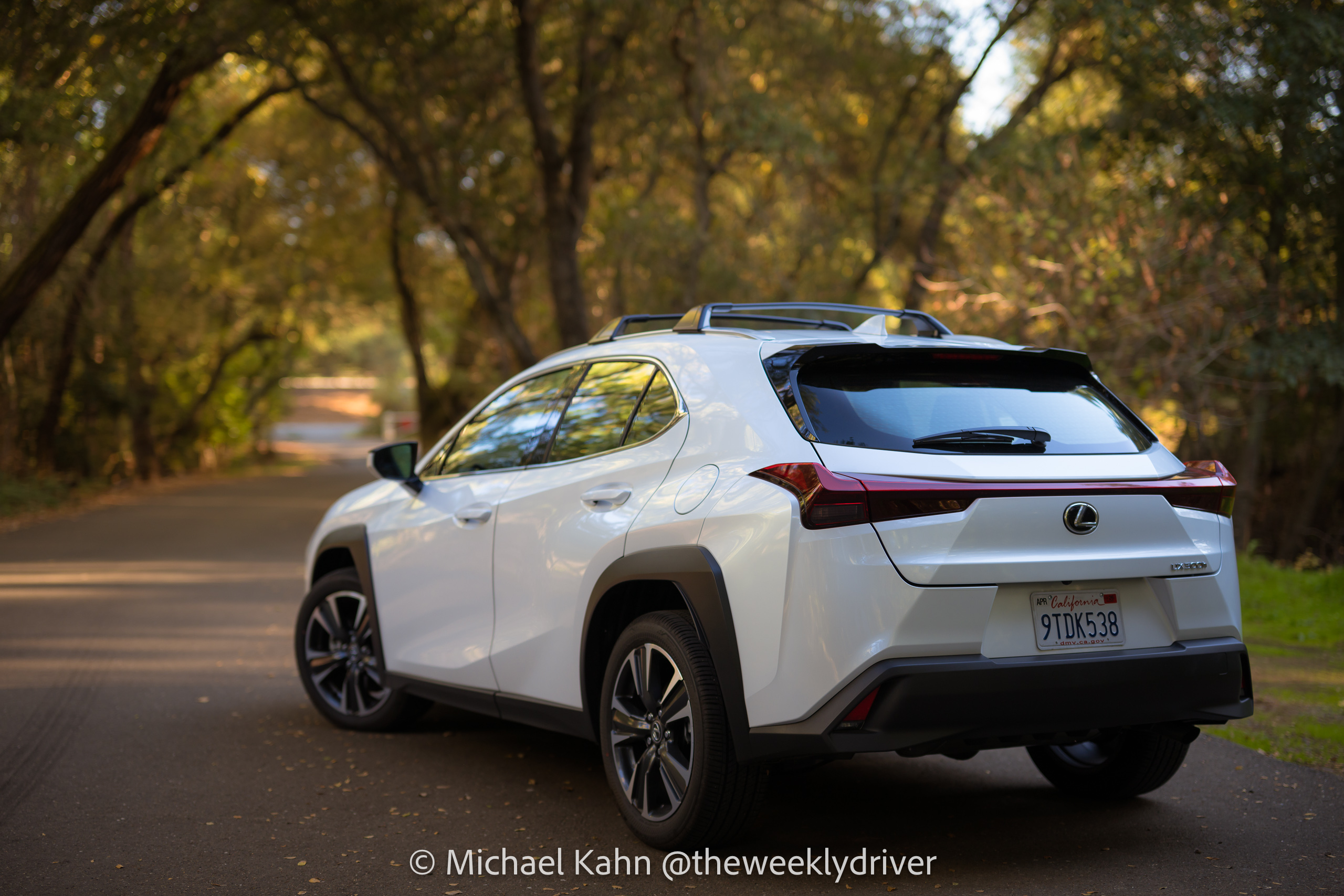
The relatively short wheelbase and tall crossover proportions contribute to some body motion on uneven pavement, but the ride quality remains acceptable for the segment.
The EPA rates the front-wheel-drive UX 300h at 45 mpg city, 41 mpg highway, and 43 mpg combined. These figures represent improvements over the previous model despite the power increase.
Real-world testing confirms these estimates. Multiple reviewers report achieving between 37 and 42 mpg in mixed driving. One owner achieved 37.2 mpg with regular use of climate control. Another tester recorded exactly 40.0 mpg over 200-plus miles of varied driving.
The 10.6-gallon fuel tank provides adequate range despite its modest capacity. At 43 mpg combined, drivers can expect approximately 455 miles between fill-ups under normal conditions.
EV mode allows brief periods of electric-only operation at low speeds, useful in parking structures or quiet residential areas. The system seamlessly transitions between gasoline and electric power under most conditions, with less intrusion than older Toyota hybrid systems.
The tested vehicle represents the UX 300h Premium trim, which builds substantially on the base model. Starting at $40,915 for front-wheel drive, the Premium adds heated and ventilated front seats finished in Palomino NuLuxe.
NuLuxe is Lexus’ proprietary synthetic leather material. The material provides a premium appearance while requiring less maintenance than genuine leather.
Cleaning requires only warm water and microfiber cloths. The material withstands heat and UV exposure better than traditional leather, relevant in Sacramento’s summer climate where temperatures regularly exceed 95°F.
The Premium trim includes a 12.3-inch digital gauge cluster, replacing the base model’s 7-inch display. This larger screen provides more information at a glance and appears more modern than the smaller unit.
The power rear door with kick sensor simplifies loading when carrying groceries or other items.
A power tilt-and-slide moonroof comes standard on the Premium.
Rain-sensing windshield wipers activate automatically, and the auto-dimming rearview mirror reduces glare from following vehicles at night.
The standard eight-inch touchscreen infotainment system provides wireless Apple CarPlay and Android Auto connectivity.
Drive Connect with cloud navigation, intelligent assistant, and destination assist includes a three-year trial subscription.
Six speakers deliver adequate audio quality, though a 10-speaker premium system is available.
The Eminent White Pearl exterior paint provides a clean, sophisticated appearance that complements the vehicle’s sculpted bodywork. The premium paint finish adds $595 to the vehicle price based on similar configurations.
Inside, the interior creates a warm and simple inviting atmosphere.
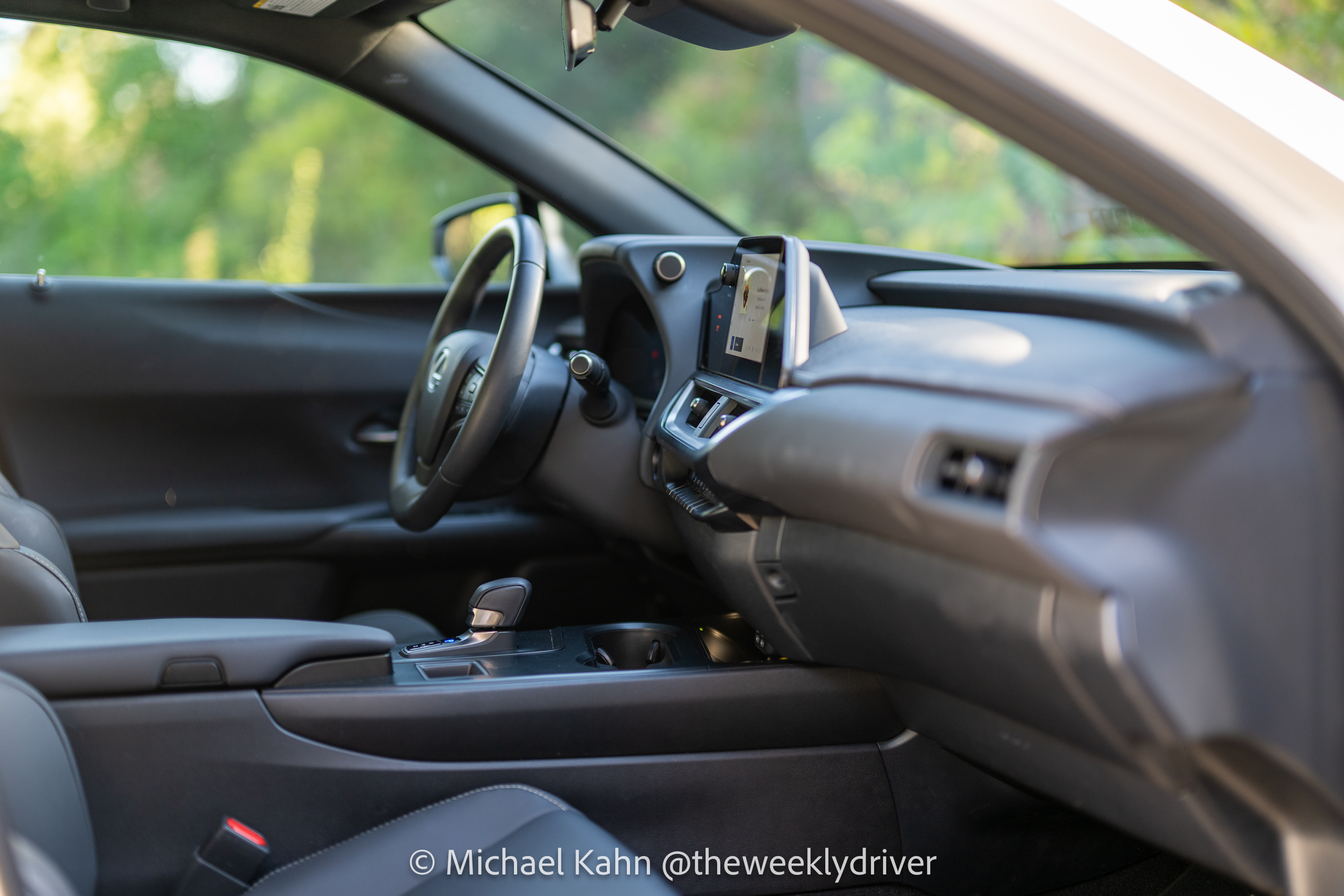
The dashboard features honeycomb-texture trim on certain surfaces. Controls fall easily to hand with intuitive placement.
Front seat comfort proves excellent for extended drives. The eight-way power-adjustable seats provide adequate support and positioning.
Heated and ventilated functions work effectively. The steering wheel features a leather wrap with integrated controls for audio, phone, and cruise functions, all in familiar Lexus placement.
Rear seat space presents challenges common to the subcompact crossover segment. Legroom measures 33.1 inches.
Adults over six feet tall will find the rear seat cramped for long trips. The relatively upright seating position helps maximize available space. Two adults fit comfortably; three becomes tight.
Cargo capacity totals 17.1 cubic feet behind the rear seats. This figure trails most competitors by meaningful margins.
The BMW X1 offers 25.7 cubic feet, the Audi Q3 provides 23.7 cubic feet, and the Mercedes-Benz GLA includes 15.0 cubic feet. The 60/40-split folding rear seats expand usable space when needed.
An adjustable rear cargo deckboard allows customization of the cargo area height. Small item storage includes door pockets, a center console, and cupholders throughout the cabin.
The UX 300h prioritizes refinement over sportiness. The suspension delivers composed handling on winding roads without feeling overtly sporty.
The chassis weighs 3,455 pounds in front-wheel-drive form, keeping mass under control, with tight turns that potentially pull feeling smooth.
Steering provides adequate weight but limited feedback. Turn-in feels predictable, allowing confident corner entry.
Body roll remains controlled during aggressive direction changes. The short wheelbase of 103.9 inches contributes to nimble handling in tight spaces.
Ride quality proves acceptable on smooth pavement. The 18-inch wheels and run-flat tires generate some impact harshness over expansion joints and potholes. Highway travel feels composed with manageable wind and road noise levels.
Brake pedal feel combines regenerative and friction braking smoothly. Initial pedal response can feel inconsistent as the system blends the two braking methods, a characteristic common to hybrid vehicles.
Three drive modes adjust powertrain and throttle response.
ECO mode maximizes fuel economy with gentler throttle mapping.
Normal provides balanced performance.
Sport mode sharpens throttle response and holds the engine at higher rpm, though the power increase feels modest compared to other vehicles driven.
Lexus provides a four-year, 50,000-mile basic warranty and six-year, 70,000-mile powertrain warranty. The hybrid battery receives an eight-year, 100,000-mile warranty. These coverage periods match industry standards for luxury vehicles.
Reliability forms a core Lexus strength. The UX shares its hybrid system with the proven Toyota Prius, which has demonstrated excellent reliability over multiple generations.
Maintenance costs should remain reasonable. The hybrid system reduces brake wear through regenerative braking.
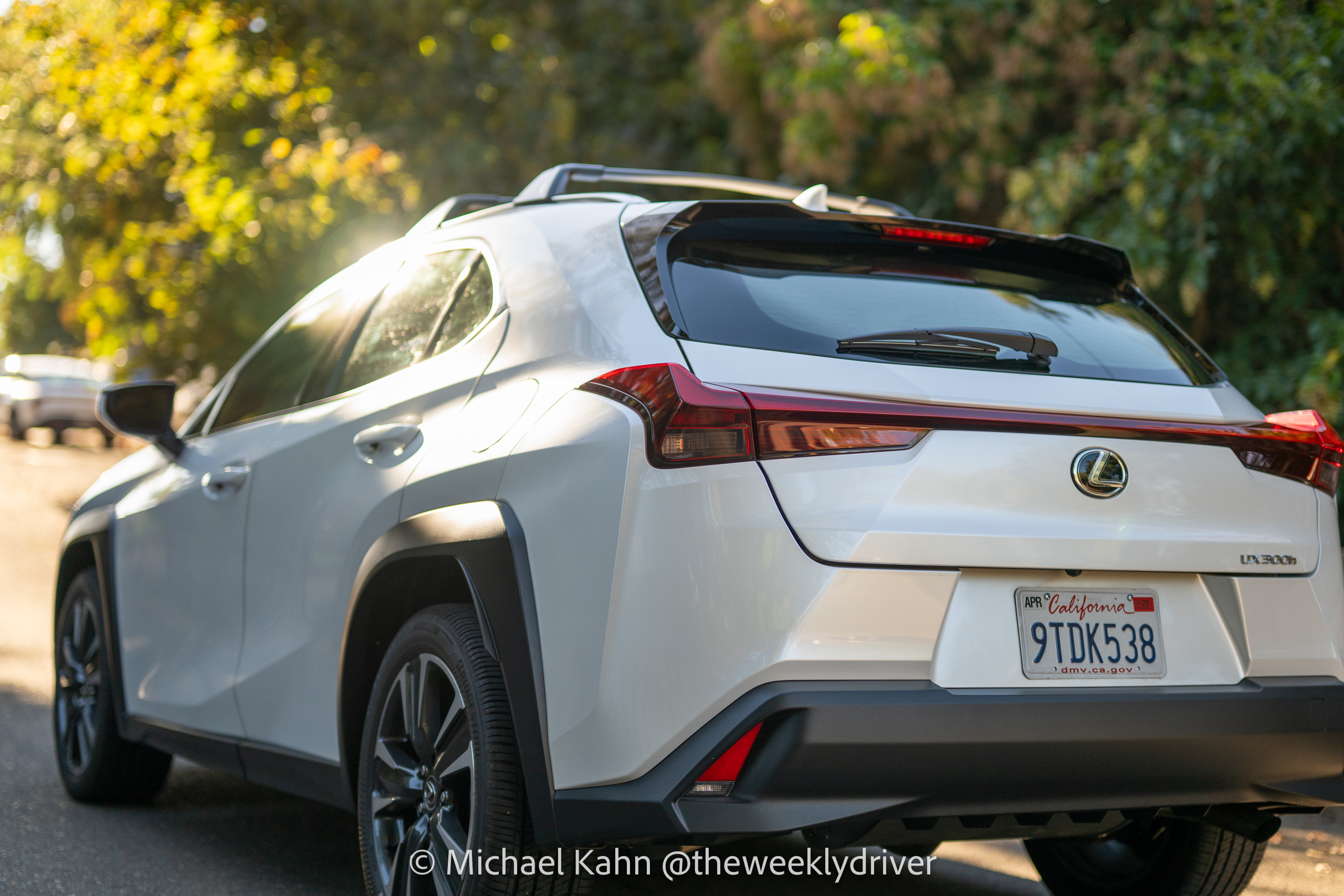
The continuously variable transmission requires less frequent service than traditional automatic transmissions. Lexus recommends 10,000-mile service intervals for most maintenance items.
Fuel savings accumulate quickly. At current Sacramento fuel prices, the difference between 43 mpg and 28 mpg amounts to approximately $800 annually for a driver covering 15,000 miles per year. Over five years of ownership, this represents $4,000 in fuel savings before accounting for future price increases.
Resale values remain strong for Lexus products. Hybrid models typically hold value well as fuel prices fluctuate. The UX 300h should depreciate less severely than competitors over a typical ownership period.
Subcompact Crossover Competitors
The luxury subcompact crossover segment includes several strong alternatives to the UX 300h. Each competitor offers distinct advantages depending on buyer priorities.
The 2025 BMW X1 xDrive28i starts at $40,950 with standard all-wheel drive.
The turbocharged 2.0-liter four-cylinder produces 241 horsepower, allowing 0-60 mph acceleration in 6.2 seconds. This represents significantly quicker performance than the Lexus.
The X1 offers 25.7 cubic feet of cargo space, 50 percent more than the UX 300h. Fuel economy rates at 24 city, 33 highway, and 28 combined mpg. The X1 delivers sportier handling and more powerful acceleration at the expense of efficiency.
The 2025 Audi Q3 45 TFSI starts at $39,800 with standard Quattro all-wheel drive.
The turbocharged 2.0-liter engine generates 228 horsepower and 251 lb-ft of torque, reaching 60 mph in 7.1 seconds.
Cargo volume measures 23.7 cubic feet. Fuel economy checks in at 20 city, 28 highway, and 23 combined mpg.
The Q3 provides balanced performance with adequate cargo space but trails the Lexus in efficiency by a wide margin.
The 2025 Mercedes-Benz GLA 250 starts at $41,850.
The turbocharged 2.0-liter four-cylinder produces 221 horsepower and 258 lb-ft of torque. The GLA reaches 60 mph in 6.3 seconds with compelling handling dynamics.
Cargo space measures just 15.0 cubic feet, the smallest in this comparison. Fuel economy rates at 25 city, 33 highway, and 27 combined mpg.
The GLA delivers upscale materials and strong performance but sacrifices practicality with minimal cargo capacity.
The 2025 Mazda CX-30 2.5 S starts at approximately $25,200, significantly less expensive than the luxury alternatives.
The naturally aspirated 2.5-liter four-cylinder produces 191 horsepower with standard all-wheel drive. Acceleration to 60 mph requires approximately 8.3 seconds.
Cargo space measures 20.2 cubic feet. Fuel economy rates at 26 city, 33 highway, and 27 combined mpg. The CX-30 offers engaging handling and attractive styling at a lower price point, though it lacks the premium materials and refinement of true luxury marques.
The UX 300h distinguishes itself with exceptional fuel economy unmatched by any competitor with a 2025 vehicle in this comparison. The hybrid powertrain delivers fuel savings that quickly offset the higher initial price. Buyers prioritizing efficiency and low operating costs will find the UX 300h compelling.
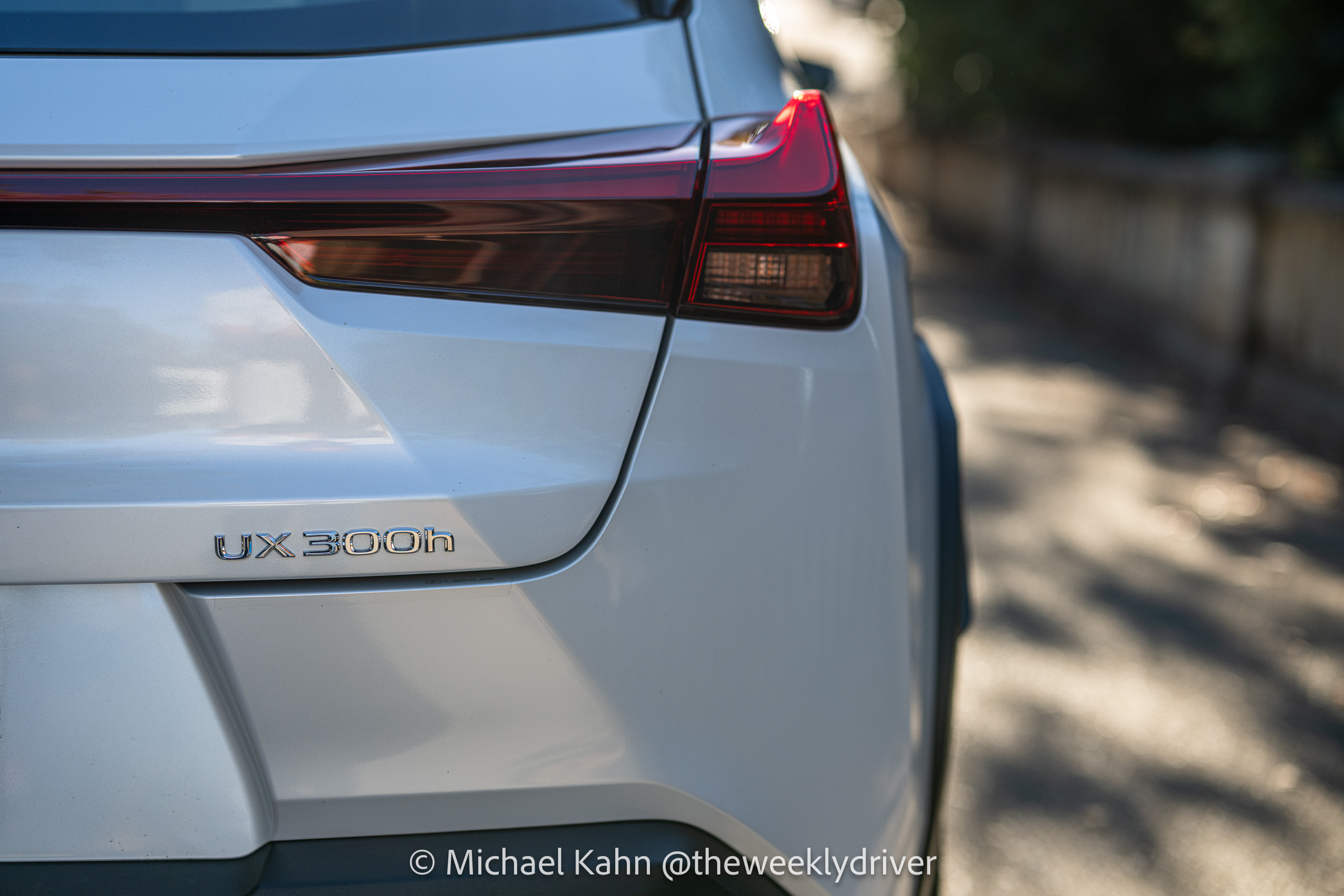
The 2025 Lexus UX 300h Premium serves a specific buyer profile exceptionally well. Sacramento commuters navigating construction-plagued Interstate 50 and Interstate 80 will appreciate the advanced driver assistance features and exceptional fuel economy.
The compact dimensions simplify parking in dense midtown neighborhoods. Operating costs remain low despite premium positioning.
Compromises exist. Acceleration lags German competitors by noticeable margins.
Cargo capacity trails segment leaders. Rear seat space limits practicality for families or taller passengers. The CVT lacks the engagement of conventional automatic transmissions.
The Premium trim tested here hits a sweet spot in the lineup at $40,915. The 12.3-inch gauge cluster, heated and ventilated seats, and power liftgate justify the premium over the base model. The Eminent White Pearl and Palomino interior combination creates an upscale, inviting environment.
Fuel economy separates the UX 300h from all competitors. The EPA-estimated 43 mpg combined eclipses every luxury subcompact crossover by double-digit margins.
Real-world testing confirms these figures with multiple drivers achieving between 37 and 42 mpg. Sacramento’s relatively flat geography and moderate year-round temperatures optimize hybrid efficiency.
Build quality and materials meet Lexus standards throughout the cabin. The NuLuxe upholstery provides a premium appearance while requiring minimal maintenance. Interior design feels modern without the overwrought complexity plaguing some competitors.
Buyers should strongly consider test driving in realistic conditions. Highway acceleration deserves evaluation for those regularly merging into fast-moving traffic.
Cargo space requires verification against actual hauling needs. Rear seat dimensions should be confirmed with intended passengers.
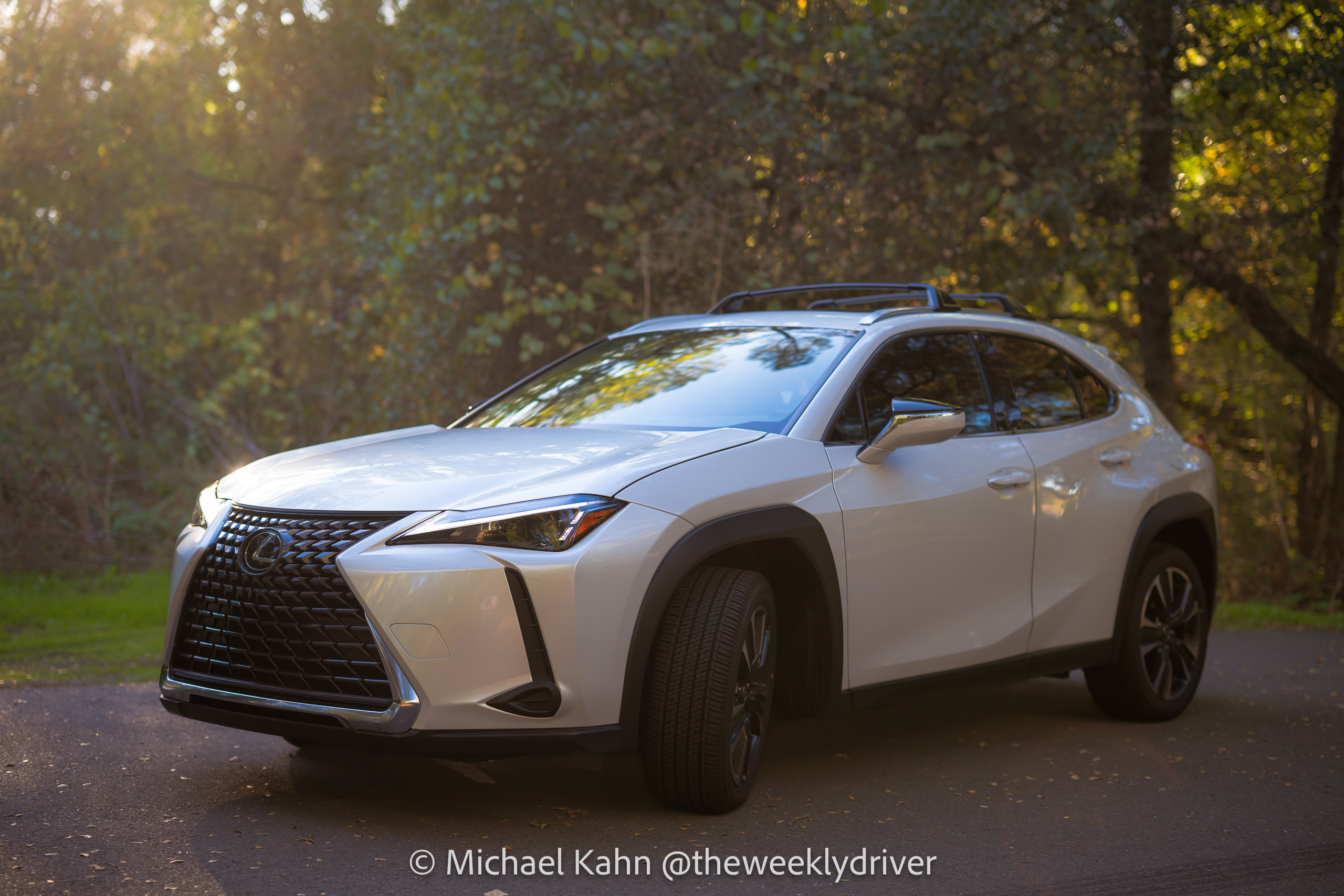
The UX 300h makes sense for singles, couples, or empty nesters prioritizing efficiency and luxury over space and performance. Commuters traversing between urban and suburban locations will find the combination of features, fuel economy, and manageable size compelling.
Lexus positions the UX 300h as an entry-level offering, but the execution feels more refined than that designation suggests. The hybrid powertrain operates with impressive smoothness. The cabin insulates occupants from the outside world effectively for a vehicle this size.
For buyers willing to accept modest cargo space and adequate rather than thrilling acceleration, the 2025 Lexus UX 300h Premium represents a compelling package. Exceptional fuel economy, strong reliability, low operating costs, and genuine luxury materials combine to create a daily driver that excels at its intended mission.
https://www.lexus.com/models/UX-hybrid
Article Last Updated: November 24, 2025.
